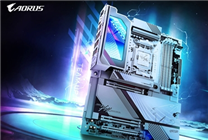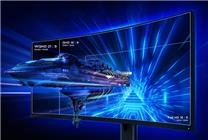The GTX 2080 Ti Prototype: A Historical Insight into NVIDIA’s Turing Architecture
Summary:
- The GTX 2080 Ti prototype surfaces, showcasing the evolution of NVIDIA’s Turing architecture.
- A Reddit user reveals the engineering sample, providing insight into its development timeline.
- BIOS flashing attempts on the prototype highlight the complexities of hardware modifications.
On September 16, the tech community was abuzz with revelations surrounding NVIDIA’s Turing architecture. Seven years ago, just before the official launch of the new series, NVIDIA made a pivotal decision, renaming its upcoming lineup from "GTX 20" to "RTX 20." This rebranding marked the company’s significant transition into the realm of ray tracing technology.
The Discovery of the GTX 2080 Ti Prototype
Despite the historical context of the RTX branding, rumors persist about the existence of several early GTX-prefix prototype cards. Recent discussions have unveiled the GTX 2080 Ti prototype, which has now been confirmed to exist. A dedicated Reddit user, known as SubstantialMark959, recently shared their findings regarding an engineering sample marked "GeForce GTX."
This prototype card presented a unique opportunity for enthusiasts and historians alike. "A friend gave me this and asked me to try to repair it," SubstantialMark959 explained. "It couldn’t show an image, and it turned out to be just an engineering sample. It seems that it was not widely known until now." The excitement surrounding this discovery highlights the ongoing interest in foundational hardware innovations.
Insights from the Engineering Sample
The user provided a BIOS screenshot that revealed crucial information about the graphics card’s development. The card was registered on July 15, 2018, with a motherboard number of PG150 and a SKU of 30. These specifications directly correlate with the later-released RTX 2080 Ti, reinforcing the notion that this was a variant before the official rebranding occurred.
However, the revelations did not end there. SubstantialMark959 attempted to flash various RTX 2080 Ti BIOS versions onto the prototype in hopes of reviving its capabilities. Unfortunately, these efforts proved unsuccessful. The user speculated that changes in the SubID or circuit definitions might be responsible for the incompatibility, further demonstrating the challenges associated with hardware tinkering.
BIOS Flashing: A Challenge for Enthusiasts
Flashing BIOS versions on a prototype card is an intricate process. While it’s technically feasible to force a flash onto an unsupported BIOS, this approach is fraught with complications that most users may not be equipped to handle. Even experienced enthusiasts can struggle with BIOS issues that arise from hardware revisions.
The complexities of the flashing process underscore the fascinating yet intricate nature of technological evolution. Each prototype represents a moment in time, solidifying the relationship between engineering decisions and consumer products. As gaming technology evolves, insights drawn from early models can inform future advancements.
A Closer Look at the GTX 2080 Ti
The GTX 2080 Ti prototype embodies a pivotal moment in graphics technology. As NVIDIA embraced ray tracing, this early iteration predates the full realization of the Turing architecture’s capabilities. The implications of such discoveries extend beyond mere nostalgia; they provide valuable lessons in innovation, design, and market strategy.
Graphics cards have undergone significant advances since the Turing launch, and understanding the developmental history is crucial for both consumers and developers alike. The GTX 2080 Ti prototype exemplifies the detailed work and resources that manufacturers invest prior to a product’s release, reflections evident in its architecture and performance benchmarks.
Conclusion
The emergence of the GTX 2080 Ti prototype enriches our understanding of NVIDIA’s journey and the intricate workings of the Turing architecture. As technology enthusiasts continue to explore and document these findings, the significance of engineering samples like this cannot be overstated. They encapsulate a transformative era in gaming graphics, merging innovation with engineering challenges that persist even today.
While the discussion around the GTX prefix and its eventual evolution into the RTX series remains engaging, the lessons learned from prototypes offer a glimpse into the future of graphics technology. Whether you’re a gamer, developer, or tech historian, the discovery of the GTX 2080 Ti prototype serves as a compelling chapter in the story of NVIDIA’s growth and innovation.





